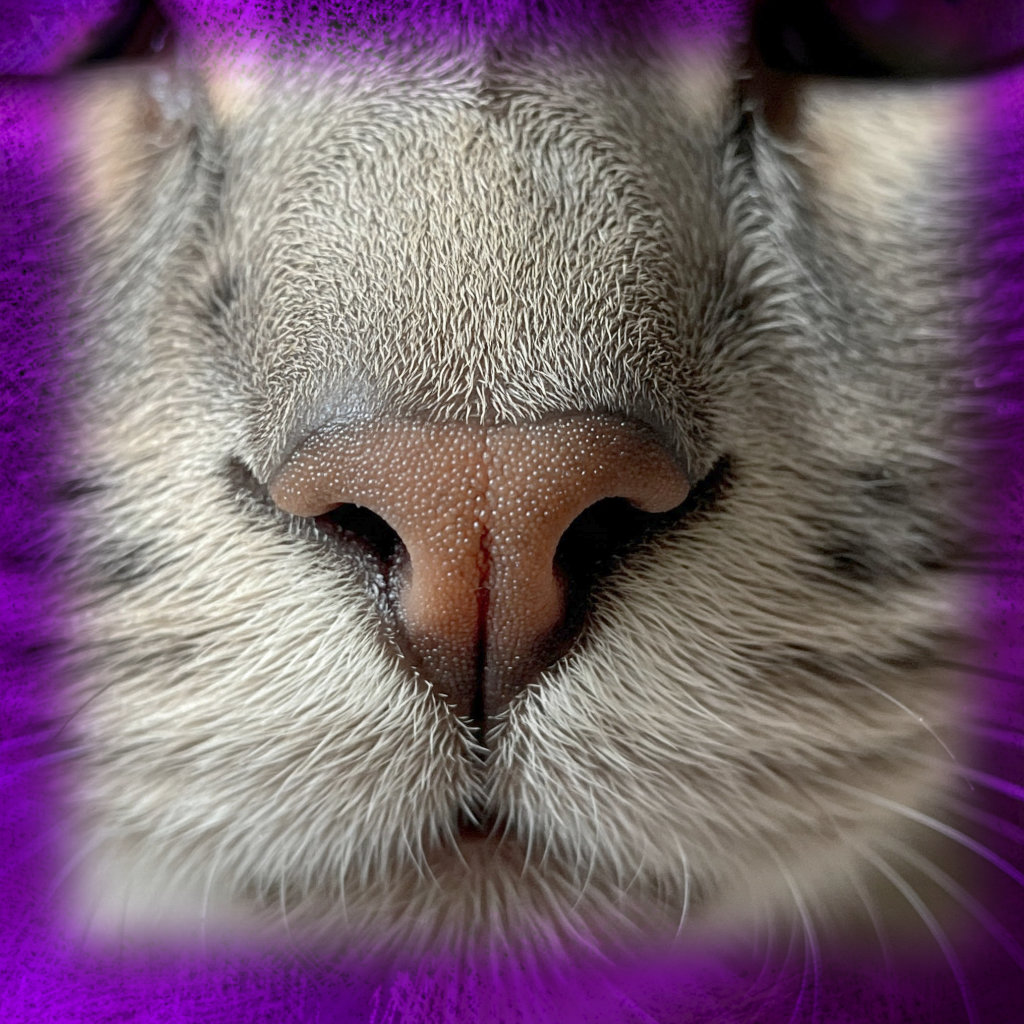The Role of a Cat’s Nose
A cat’s nose is far more than a cute snout—it’s a critical tool for survival. Felines rely on their sense of smell to hunt, identify food, detect danger, and even recognize their owners. The moisture on their nose enhances scent detection by capturing odor particles, much like a dog’s wet nose.
Normal vs. Abnormal Nasal Moisture
A healthy cat’s nose can fluctuate between wet and dry throughout the day. Factors like sleep, ambient humidity, and activity levels influence this variation. However, if the nose remains persistently dry, cracked, or flaky, it may signal an underlying issue.
How a Cat’s Nose Naturally Hydrates
Cats secrete a thin layer of mucus to keep their noses moist. They also frequently lick their noses, redistributing saliva for added hydration. If this natural lubrication is disrupted, dryness can occur.
Common Causes of a Dry Cat Nose
1. Environmental Factors
Low humidity, excessive heat, or dry indoor air (especially in winter due to heating systems) can dehydrate a cat’s nose. Air conditioning and fans may also contribute to moisture loss.
2. Dehydration
Cats are notorious for low water intake, which can lead to systemic dehydration. Signs include sunken eyes, lethargy, and poor skin elasticity—along with a dry nose.
3. Allergies & Irritants
Just like humans, cats can suffer from allergies to pollen, dust, cleaning products, or even certain foods. These allergies may cause nasal dryness, sneezing, or watery eyes.
4. Sunburn (Solar Dermatitis)
Light-colored or hairless cats are particularly prone to sunburn on their noses. Prolonged UV exposure can lead to peeling, redness, and chronic dryness.
5. Underlying Health Conditions
Persistent dryness may indicate:
- Upper Respiratory Infections (accompanied by sneezing or discharge)
- Autoimmune Disorders (like pemphigus, causing crusting)
- Feline Herpesvirus (leading to nasal irritation)
- Kidney Disease (causing dehydration)
When Should You Worry? Warning Signs
A dry nose alone isn’t necessarily alarming, but these accompanying symptoms warrant a vet visit:
- Cracks, scabs, or bleeding
- Discoloration (pale, yellow, or very red)
- Thick, colored nasal discharge
- Lethargy or loss of appetite
- Excessive pawing at the face
If your cat’s nose is dry and they exhibit any of these signs, seek professional advice promptly.
Home Remedies to Treat a Dry Cat Nose
1. Increase Hydration
- Wet Food Diet: Higher moisture content than kibble.
- Water Fountains: Encourages drinking with flowing water.
- Broth Supplements: Low-sodium chicken or beef broth can entice cats to drink more.
2. Humidify the Air
A cool-mist humidifier near your cat’s favorite resting spot can combat dry indoor air.
3. Pet-Safe Moisturizers
- Coconut Oil: A natural, edible option (apply a tiny amount).
- Vaseline or Pet Balms: Helps seal in moisture (ensure they don’t lick excessive amounts).
- Avoid Human Lotions: Many contain toxic ingredients like salicylic acid.
4. Dietary Supplements
Omega-3 fatty acids (found in fish oil) support skin health and reduce inflammation.
5. Sun Protection
For sun-sensitive cats:
- Pet-Safe Sunscreen: Apply to ears and nose before outdoor exposure.
- Limit Midday Sun: Keep cats indoors during peak UV hours.
Medical Treatments for Persistent Dryness
If home remedies don’t resolve the issue, a veterinarian may recommend:
1. Diagnostic Tests
- Bloodwork: Checks for kidney disease or infections.
- Skin Scraping: Rules out fungal or bacterial infections.
- Allergy Testing: Identifies environmental or food triggers.
2. Prescription Treatments
- Antibiotics: For bacterial infections.
- Steroid Creams: For autoimmune-related dryness.
- Immunosuppressants: For severe cases like pemphigus.
3. Hydration Therapy
Subcutaneous fluids may be administered if dehydration is severe.
Preventing Future Dryness
1. Maintain Optimal Hydration
- Multiple water bowls placed around the house.
- Regularly refresh water to keep it appealing.
2. Optimize the Living Environment
- Humidity Control: Aim for 40-60% indoor humidity.
- Air Purifiers: Reduce dust and allergens.
3. Regular Vet Check-Ups
Annual exams help catch underlying conditions early.
4. Grooming & Nose Care
- Gentle Cleaning: Use a damp cloth to wipe away debris.
- Avoid Harsh Chemicals: Use fragrance-free, pet-safe cleaners.
Debunking Myths About Dry Cat Noses
Myth 1: “A Dry Nose Always Means Illness”
False. Many healthy cats have dry noses, especially after sleeping near a heat source.
Myth 2: “Cats Don’t Need Much Water”
Dangerously false. Cats evolved from desert animals but still require proper hydration to avoid kidney and urinary issues.
Myth 3: “Human Moisturizers Are Safe for Cats”
No. Many contain toxic ingredients like xylitol or essential oils.
Expert Insights & Case Studies
Veterinarian Perspective
Dr. Sarah Mitchell, DVM, states:
“About 20% of dry nose cases I see are due to environmental factors. The rest often involve dehydration or allergies. Early intervention prevents complications.”
Success Story: Oliver’s Recovery
Oliver, a 7-year-old tabby, had chronic nasal dryness and flaking. Blood tests revealed early kidney disease. With a hydration plan and prescription diet, his nose returned to normal within weeks.
Final Thoughts & Action Plan
A dry cat nose isn’t always an emergency, but it shouldn’t be ignored. Follow these steps:
- Assess Hydration – Ensure your cat drinks enough.
- Check for Other Symptoms – Seek a vet if signs of illness appear.
- Use Safe Moisturizers – Coconut oil or vet-approved balms can help.
- Prevent Sun Damage – Protect light-colored cats from UV exposure.
By understanding the causes and implementing these solutions, you can keep your cat’s nose healthy—and ensure they stay happy and comfortable.

